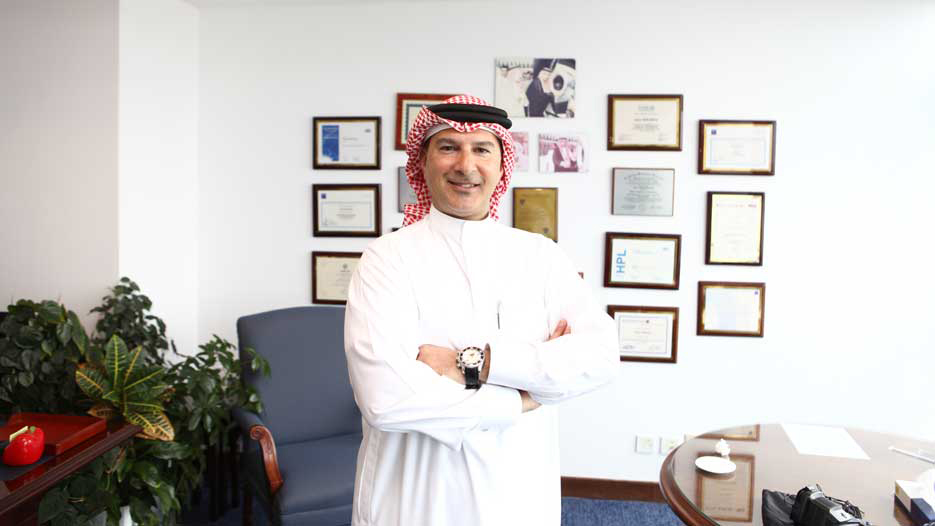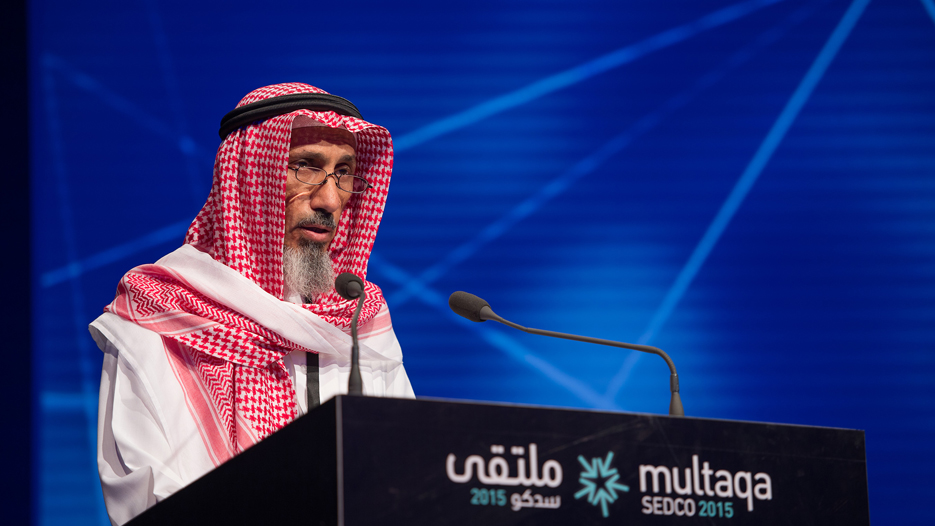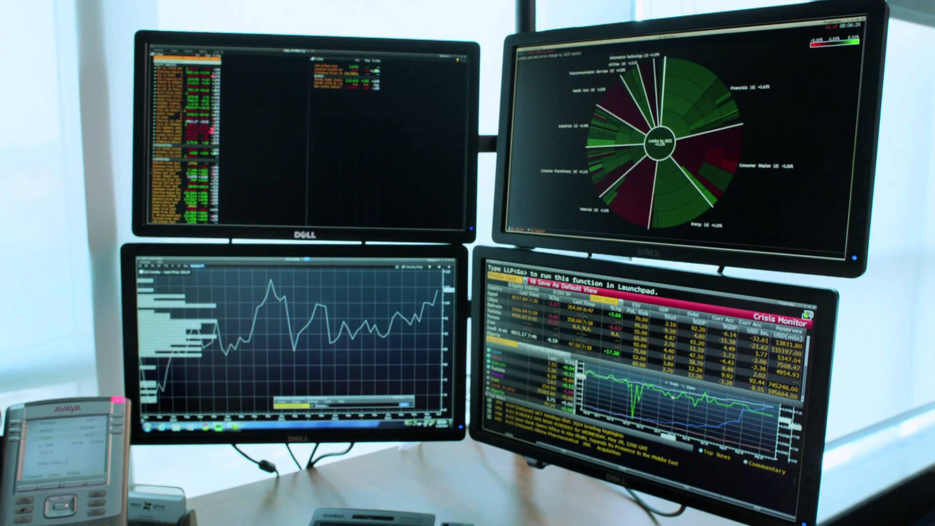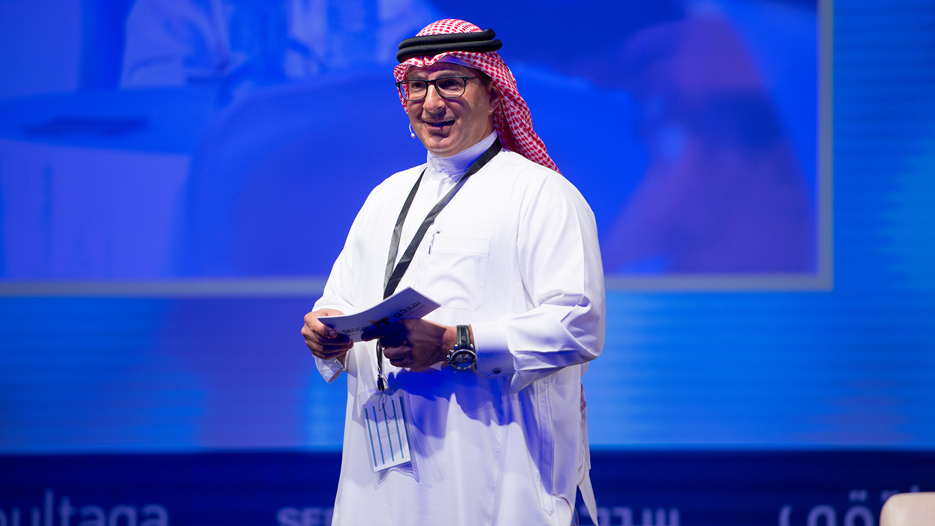SEDCO: Increasing Investments in Saudi Arabia
The challenge at FDI, is how to bring foreign direct investments into a country with a troubled neighborhood. But as one of the emerging market powers, the public equity is going to be opened in Saudi Arabia in the middle of this year.
Interview with Anees Ahmed Moumina, CEO of SEDCO Holding

There are a lot of challenges in the real estate sector when it comes to regulations, middle-income housing, outlook and investments. There are a lot of regulations, a lot government interference in the sector. How do you face these challenges?
This question comes at a very apt time for the real estate sector. Some tariffs are levied on white lands. At SEDCO, we look at this as something positive to the economy and to us as a group. The tariffs on white lands have been levied, but the technicalities will be introduced later. It has to be within the city limits. From the point of view of the economy, this helps to put a cap on the continuous inflation in the raw land prices, but it also helps developers to come in and help develop more housing, and low-income and middle-income projects. We look at this challenge as something positive.
With reference to your question, if you look at the industry and the real estate market right now, one of the problems is the limited number of developers in the market – quality developers are even more limited. Another problem is that the cost of raw materials is escalating. Previously, it cost just as much as the land, now the new regulations coming in would help. We, at SEDCO Group, along with our various operating companies, are looking into carrying out more developments. One of the companies we own is the Ewaan Global, which is in the development business.
So, it has won the award for one of the largest private real estate development businesses in Saudi Arabia by the Ministry of Health two years ago.
One of its prime projects right now is AlFareeda, which is in north of Jeddah. It has more than 1800 villas. Right now, we are in the process of handing over the first phase with 310 villas. We are also in the process of developing a number of projects in Jeddah, and Riyadh, one of prime locations is in the Tahlia Street in Jeddah, which is the main shopping street. We have a Galleria complex, which is a complex, with 12 floors and 3 underground floors, with shopping centers and a hotel operated by one of our companies called Elaf Group, with 365 rooms. I hope you have a chance to see it.
Could investment companies get hurt by the White land tax?
They could, but the objective of this initiative is not to have white lands within the city limits. It’s to have white lands outside the city limits. But in Saudi Arabia, you sometimes have large real estate holders with white lands that are not developed. This puts a stress of the prices and the real estate prices keep escalating. The regulations get all the land owners to develop their lands. Otherwise, you have to pay the tariffs for that.

How is the global slowdown in the prices of commodities, especially the oil prices and macro development affecting the investment environment in Saudi Arabia and the FDIs?
If you are looking specifically at Saudi Arabia, I can tell you that Saudi Arabia has a strong economy. But we are living in a very troubled neighborhood. Something that is affecting Saudi Arabia is the oil prices. As you know, a large percentage of the income comes from oil. But, if you look at the economy and the structure of Saudi Arabia, luckily, we have large reserves that can sustain the development of the economy for a number of years, without slowing down or hampering the economy. But if you look at the borrowing history of the government, the GDP percentage, the slowdown is almost nil, as opposed to other countries, which is over 100%.
This means that we still have power to borrow locally and internationally. In addition to this, another plus for us is the span of our projects. The government is still the main provider of projects and labor in the country. Very simply, we can extend the tenure of the projects. For example, if they are going to build an airport and it was originally scheduled for 3 years, now it can be stretched for a duration of 5 years, which means an extended payment period. To summarize, there are some difficult developments happening in the market right now, but with the reserves that we have, we can still sustain the economy.
The challenge at FDI, is how to bring foreign direct investments into a country with a troubled neighborhood.
But as one of the emerging market powers, the public equity is going to be opened in Saudi Arabia in the middle of this year. If you are one of the big investment banks in Saudi Arabia and you have an emerging market fund, you cannot afford not to invest a small percentage of the fund in Saudi Arabia. So, a small percentage here from one large fund, a small percentage from another large fund would help to bring in some foreign investments into Saudi Arabia. We look forward for the opening of the public equity market to international investors by the middle of this year.
In which specific sectors does SEDCO see the most important investment opportunities within Saudi Arabia in the coming two to three years?
SEDCO is based in Saudi Arabia, and we look at Saudi Arabia as being our home and as the base for our prime investments.
We are looking to extend and increase our investments in Saudi Arabia.
Real estate, of course, is a major asset for us and we keep investing in this sector. We are also looking at different sectors. The Saudi population is growing and is young.
It is a large economic power within this region. So, we are looking at things that go along with what affects or concerns the young population. Number one here is education. So, we are looking at investing more in education, schools, elementary and high schools. We are looking at this from two points of view – from the profit point of view and from the CSR point of view. At SEDCO, we have a very good financial literacy program called Riyali and it is under our CSR programs.
It looks into the financial literacy at all levels, from elementary to college for men and women. Other sectors that we are also looking to grow in is the pharmaceutical sector, the medical sector. We are already in this sector and we are looking to diversify more. We are also looking at the transportation sector. We are already in it, but we are looking into new developmental channels. We are looking at different sectors and we can see that there are opportunities in Saudi Arabia.

Something that we have already touched upon is strong Corporate Governance Practices. How does Saudi Arabia rank globally for corporate governance?
Right now, corporate governance is a buzz word in Saudi Arabia and in the region. In corporate governance, we are aiming at separating ownership from management. A lot of companies or family businesses do not realize that this is a long journey. The Saudi economy is characterized by a large percentage of family-owned businesses. I was in the banking sector before. I noticed there that there are a lot of companies that had very good business models, good management, but whenever there is a dispute at the ownership level, everything else just collapses. So, it is important to have a sustainable structure for family businesses to service the current generation.
So, at SEDCO, we started this journey 15 years ago.
Right now, we are considered a role model in terms of corporate governance, in terms of separating ownership from management.
I would like to give two strong examples. SEDCO is a family business. If you look at the SEDCO Holding board, it comprises 8 people, 3 are family members and 5 are external directors, which includes international directors from the USA, from Europe and from the East. We have brought in the best from all the worlds. But the presence of the 5 non-family directors indicates that they have the majority vote.
Decisions at the board can be taken by non-family members. This is unheard of here. It is not common practice here in Saudi Arabia. We have won a number of awards because of our corporate governance and our corporate structure. We are also invited to a lot of events to hold presentations on the SEDCO model. It is a very important point. The families have to understand this and they should start following suit before issues arise. Because once issues arise within the family, it is too late to start talking about corporate governance and separation of ownership and management.
Would you say that corporate governance in Saudi Arabia is still very weak?
Not weak, but it is still developing. But you have to start somewhere. A lot of companies say, “fine, we are doing corporate governance. We will separate ownership from management. But they don’t walk the talk. Sometimes, they do appoint directors that are not family, but these directors are not given power to vote. Or they bring in a non-family CEO, but he doesn’t have the power to decide. So, it is important to take this step, to continue with it and to get these rules abided by all family members.
In the current low yield environment in Europe and US. They have very low yields on the government papers. How do you seek higher yields? What are your targets in terms of internal investment yields?
As an international investor, you have to look at this from two important aspects. One is diversification. If you diversify your assets into different classes and different regions, if you have yield in one asset, that might counter balance with assets with low yield. And also geographically, at SEDCO, we are quite diversified and we have investments in over 40 countries.
All of our investments are Shariah-compliant. The second aspect is to look at your investment as a long-term investment. In this case, you will not really look at the small cyclical low return in any investment. It might be low yield, or slowdown in one public equity in one of the markets. As long as you believe in long-term investments, you won’t be worried about these short-term setbacks. You will look at long term returns. When we experience a low yield or a downturn in one of the markets, we see it as an opportunity to buy an asset and then we sell it when the price is right and once the market picks up.

What are the industries and international companies you would like to see invest in Saudi Arabia and potentially forming joint ventures if you will?
We are looking at having vertical integration with our existing businesses. That’s why we are inviting businesses to come to Saudi Arabia in businesses that we excel in and businesses that we are well versed in. I will give you an example of some of the recent successes that we have had. One is Tarfeeh, which is in the restaurant business.
Last year, we have signed with Macaroni Grill to open a chain of restaurants in Saudi Arabia. We opened our first restaurant in December 2014 in Riyadh. Recently, we have also signed with Ocean Basket, which is a South African seafood chain. We plan to open the first restaurant here in September 2015. We are also in the process of signing with a fourth franchise. This is on the food side. We are also in the hotel business. We have the Elaf Group. So, we are definitely looking into doing joint ventures with international chains. We are also in the automobile business.
We have Auto World. Right now we are in discussions with Auto World on how to acquire one of the international leasing companies in Saudi Arabia. We are also looking at manufacturing. Now, this is something that we are not strong in, but we are looking to expand.
So, we are looking at some kind of joint ventures with international companies coming in. Our priority are business sectors that we know well. We want to expand vertically, but we are looking at new ideas. Since we have a credible reputation in the market and due to our presence in over 40 markets, brings a lot of potential investors to join forces with us.
I think we have to look at it in terms of this: If you are a potential investor in Saudi Arabia, what would you try to look for? You would try to look for family businesses, that are strong in the market, with strong elements of separation between ownership and management. So, it is run in a professional manner and it brings a professional leadership. This will entice you as opposed to other companies, which are purely family-run.
What are the current challenges in Saudi Arabia in terms of private equity?
The local private equity market is not a diversified one. So, the opportunities to invest in Saudi Arabia, in Riyadh in private equity is not very well developed. You don’t have a lot of financial institutions that develop this. There are other investment mechanisms that are being used such as public equity, but not private equity. Things like direct investments, where you have mergers and acquisitions. So, the concept of private equity is new in Saudi Arabia, not mature yet, but it is developing.
This is from the investor’s point of view, but the other issue is from the point of view of supply. Say, someone has a company and he wants to establish his company in the market. These are looking at directly converting from a full ownership company to a publicly-held company. Not at a private placement or at private equity. That element is not present. But I think by creating more awareness among the investors and sellers, private equity will develop more.
We talked about the successful transformation from family-business, can you tell us about the inner works of family business in Saudi Arabia? What are the key lessons that were learnt during the transformation? You already mentioned that this process has to be started early to avoid any problems.
It is a journey that has to start by the shareholders of the companies. You can imagine how in a family, the ownership gets transferred from the 1st generation to the 2nd and the 3rd and so on. Each generation by itself creates more decision-makers and more interest in business or in other aspects than business. Sometimes in Saudi, we have family businesses created by two families.
That will be even more complicated in case any disputes arise between the two families. As I mentioned, the key issue is to have consensus within the family and it will take some time to transform itself. And moreover, you have to start the process early, even before an issue arises. The advantages of separating ownership from management is that you have a continuous platform for the company to grow and to provide dividends and offer goodwill to the family. There are steps to be taken for this. One step is ‘how to disengage the family’. If you are in the family business, you have a lot of employees. You might want to disengage some of the employees.
How do you introduce rules in case future family members want to join the company? Suppose there is an outsider, who is better qualified than a family member for a particular position, how do you do that? How do you differentiate between investment over a company and a personal investment on a family member or one of the shareholders? How do carry out successions in the family? How do you run a company versus a family council? Throughout the SEDCO journey, I am the 4th non-family CEO. So, it is a lot easier for me now than for the first non-family CEO. He had to go through all the transformations. Now, we actually have policies on how a family member gets employed, how family members get joint investments within the group. What is nice about the separation is that if you have business here and you also have a family council and family office. So, any interaction between the family and the business comes through the heads of the family council. It has been an interesting journey for us and we have been quoted as an example many a times and we have won a number of awards for our corporate governance rules.
Due to the liberalization of the economy and the market slowly getting affected by globalization, many family-run businesses will face a lot of challenges in Saudi Arabia. How is the business culture here different? What are the challenges in other parts of the world?
Doing business is the same everywhere. I would not call this liberalization. What is happening here is that you are allowing foreign investments to come in and invest into the public equity. By definition public equity is no longer family business. Because you are publicly held, probably 30% is still owned by public, because that is the minimum. But still, you are still regulated by the CMA.
You have a regulating body versus a family businesses that is not regulated. The challenge for family business that want to go public, would be how to have a strong corporate governance journey. But when you compete in the same sector, a publicly- held sector against a publicly-held company, even if everything else is the same, you would still opt for the one with strong corporate governance, with stronger management, where the person at the helm of affairs is appointed because of his qualification and not because of his last name. So, this is a challenge, but we very much welcome foreign investments coming in.
Now, you can even establish companies completely owned by a foreign company. For example, Sanofi is a French company. They don’t need any partners.
SAGIA is enticing FDIs. Due to SAGIA, foreign companies do not need Saudi partners. They can operate with a foreign investment license with a lot of benefits in terms of tax, labor regulations, in terms of the ease of business. You have the SAGIA one-stop-shop, where you can get all your licenses, your CR, your regulation, your labor.
But there are a lot of criticisms against SAGIA. There are people saying that it is just another layer of bureaucracy. They still have to go through the Ministry of Labor and other Ministries, which are separate entities. What is your take on the ease of investing in Saudi Arabia? Is it getting any easier?
There is a new administration body in SAGIA. Right now, SAGIA is working towards attracting large ticket-item investments. Previously, you had a lot of smaller ticket-sized investments or foreign companies coming in. There are a large number of small investments. So, it was not making a dent in the economy. Right now, there are a few but large ticket items coming in, but investing. So, you might hear a lot of complaints saying that SAGIA is imposing restrictions on the smaller companies, because they want to divert smaller companies into larger companies.
The key in SAGIA and FDI is they always look at the number of new licenses issued. It is nice to look at the number of new licenses issued with the new FDI. This is not of the existing businesses in Saudi Arabia that basically convert from 100% Saudi to foreign investors, but those that were already invested in Saudi Arabia.
To summarize, can you give us an outlook at the capital market in Saudi Arabia, with reference to everything that is going around? What is your personal opinion? Are all the evaluations correct?
The local equity market has been a bit hampered. This is natural because of what is happening around us. But the evaluation is strong enough for the companies to come in and invest. As an investor in Saudi Arabia, you have to look at it from a long-term basis. You have to look at the dips as an opportunity. This is exactly what we do. A big boost will come at mid-year when things will open up for institutional investors. We still have to look at the mechanisms used to open up investments, because they will probably open up for firms with 5 billion dollars of AUM and above.
So it will be astute investors coming in and also in terms of the limits or of the companies coming in. So the Saudi market is a must-market for any international investor looking to be in the emerging market. You would not have an emerging market fund, if you don’t have even a small percentage of capital invested in Saudi Arabia.
Is there anything you would like to mention about your clients, the funds you operate? Do you want to highlight anything else?
We have just closed our 2014 figures. We have record profits from the top line and from the bottom line. We have analyzed all our 25 plus companies, at the different sectors in real estate and all our international investments. So we are very happy as a group. It is a group effort. We look at 2015 to be a challenging year. We want to achieve even more records as a group.
When it comes to investments, are you 50% in Saudi Arabia and 50% abroad?
SEDCO is present internationally. We are looking at the market, at how things go. But we are based in Saudi Arabia and we concentrate on the Saudi market.